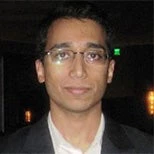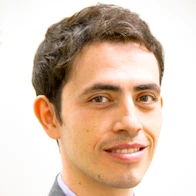
This is part of a series of blogs focused on the Sustainable Development Goals and data from the 2016 Edition of World Development Indicators. Chris Sall also contributed to this blog.
By 2030 around 60 percent of people will live in urban areas , according to the UN. Much of the 1 billion increase in urban population between now and 2030 will be in Asia and Africa, both of which are in the midst of transformations that will permanently change their economic, environmental, social, and political trajectories.
Sustainable Development Goal 11 aims to ensure that cities and other human settlements are safe, inclusive, resilient, and sustainable by targeting housing and slums, transportation, participatory planning processes, cultural heritage, waste management, air quality, disaster risk management, and other issues.
Housing the next urban billion
Providing adequate shelter and services to the rising number of urban dwellers is an enormous challenge. More than half the population of Sub-Saharan Africa lives in slum-like conditions , which the UN Human Settlements Programme describes as a lack of access to an improved drinking water source, improved sanitation facilities, sufficient living area, durable structure, or security of tenure.
Progress towards improving these conditions has been mixed. In the Central African Republic and Mozambique, the number of slum dwellers is on the rise. Conversely Rwanda lowered the proportion of its urban population living in slums from 96 percent in 1990 to 53 percent in 2014. Mali also saw a large decline, from 94 percent of its urban population to 56 percent.
Air pollution kills someone every ten seconds
Declining air quality in rapidly urbanizing regions places a growing burden on people’s health. Exposure to outdoor air pollution (as measured by levels of particles less than 2.5 microns in diameter [PM2.5]) is responsible for 2.9 million deaths per year, about one every 10 seconds. Outdoor PM2.5 levels are four times the recommended limit in South Asia and are also high in East Asia and the Pacific region; in both regions, air quality has worsened since 1990.
What exactly are we measuring?
As we have observed previously, there is no universal agreement on the definitions of “urban” and “city”which poses a challenge for monitoring SDG 11. Several SDG targets use terms such as “urban population” and “cities of over 100,000 people.” But how large or dense does a settlement need to be in order to be considered a city? Do certain kinds of economic activity need to be present for an area to be considered urban? On the outskirts of a city, where precisely does the urban area end and the rural area begin? Each country defines and measures its urban areas differently, making comparison of trends in urbanization across countries problematic.
Monitoring urbanization and pollution from space
Data from satellites are now helping researchers apply new techniques to measuring urbanization, and develop a standardized database on cities. For example, the German Aerospace Center (DLR) has mapped practically all human settlements around the globe under the Global Urban Footprint project using radar data. Similarly, the European Commission’s Joint Research Center produces a Global Human Settlements Layer, using satellite imagery, which traces urban growth since 1975. Researchers at the European Commission, the OECD, and the World Bank have been using these kinds of data to apply standardized definitions of urban areas, which are already changing our understanding of urbanization. For example, using these standard definitions, many countries in Latin America appear relatively less urban than we previously thought, and countries in South Asia appear much more urban. These standardized approaches, together with the new data from satellites, are already changing some long-held views on the distribution of cities around the world.
Pollution levels can also be monitored through satellite observations of airborne particles over both rural and urban areas. While there is no substitute for ground-level monitoring, particularly in densely populated urban areas, large swathes of the globe still do not have this monitoring infrastructure, so remote sensing technologies, such as those used for the Global Burden of Disease study, continue to be a powerful tool for measuring large-scale exposure to air pollutants.
More earth observation satellites are regularly being launched, sending back terabytes of useful data every day. These and other new sources of information can help provide a global picture of the scope and nature of the urbanization challenge, and measure our progress towards making cities inclusive, safe, resilient, and sustainable.



Join the Conversation